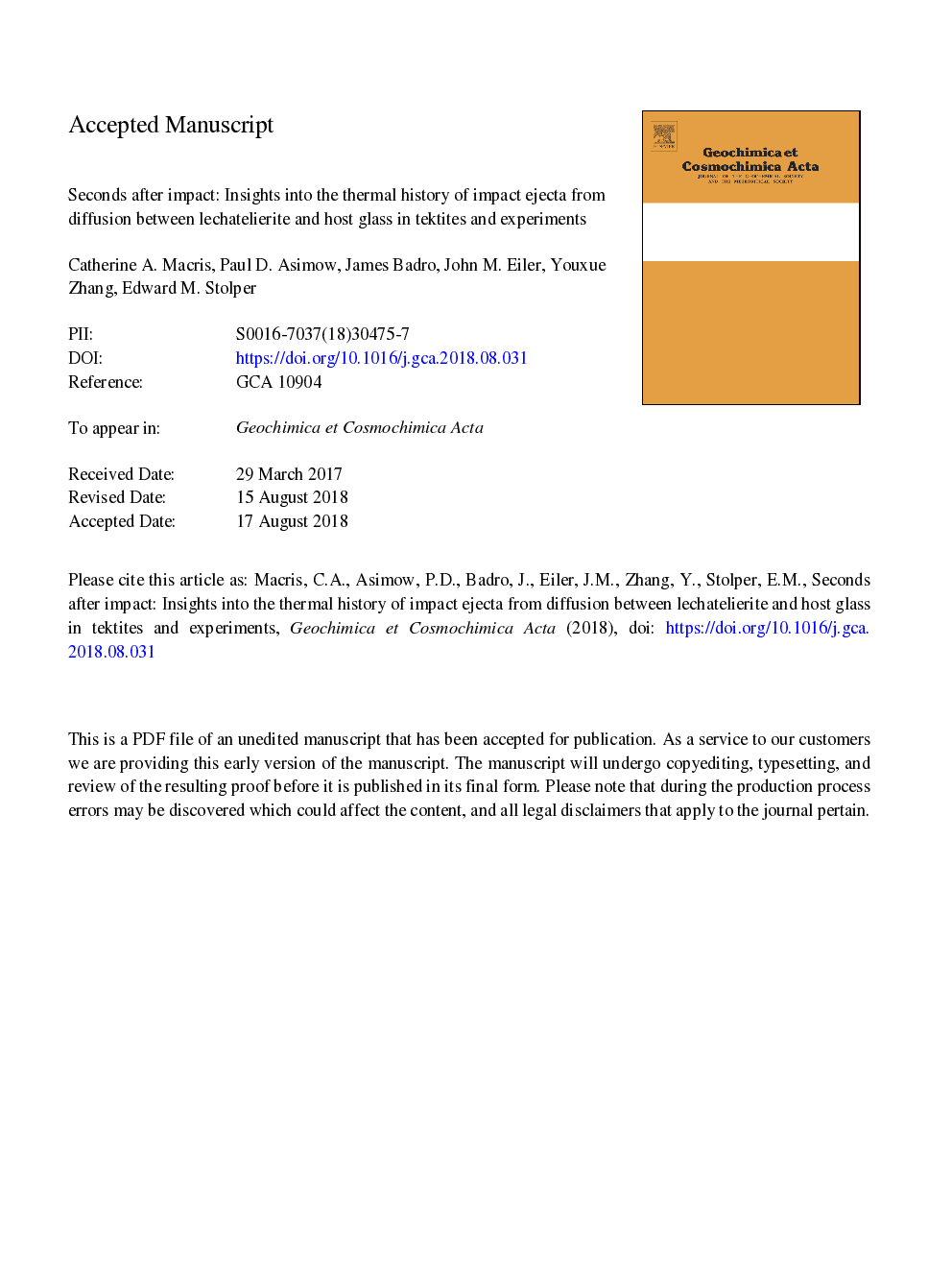| Article ID | Journal | Published Year | Pages | File Type |
|---|---|---|---|---|
| 9530967 | Geochimica et Cosmochimica Acta | 2018 | 73 Pages |
Abstract
The quantitative characterization of diffusion in boundary layers based on our experiments allow us to set limits on the thermal history of the natural tektite in which the boundary layers were discovered. If the interdiffusion between the silica and felsic melts occurred at constant temperature, the duration of heating experienced by the natural tektite we studied depends on temperature; possible solutions include heating at â¼2000â¯Â°C for â¼70â¯s, â2400â¯Â°C for â¼3 s. We also explored non-isothermal, asymptotic cooling histories; for a maximum temperature of 2400â¯Â°C, a characteristic cooling time scale of â¼50â¯s is implied, whereas, for 2000â¯Â°C, the time scale is â¼1400â¯s. Further, a maximum temperature of â¼2360â¯Â°C yields an effective diffusive time scale of â¼5â¯s, a cooling time scale of â¼90â¯s, and a cooling rate at the glass transition temperature of â¼5â¯Â°C/s; results that are consistent with independent estimates of cooling time scales for â¼1â¯cm clasts (Xu and Zhang, 2002), as well as cooling rates at the glass transition temperature (Wilding et al., 1996) - thus satisfying all currently available relevant data. More complex T-t paths are possible and can also be modeled using our experimental results and compared with and used as tests of the accuracy of physical models of tektite-forming impact events.
Related Topics
Physical Sciences and Engineering
Earth and Planetary Sciences
Geochemistry and Petrology
Authors
Catherine A. Macris, Paul D. Asimow, James Badro, John M. Eiler, Youxue Zhang, Edward M. Stolper,
